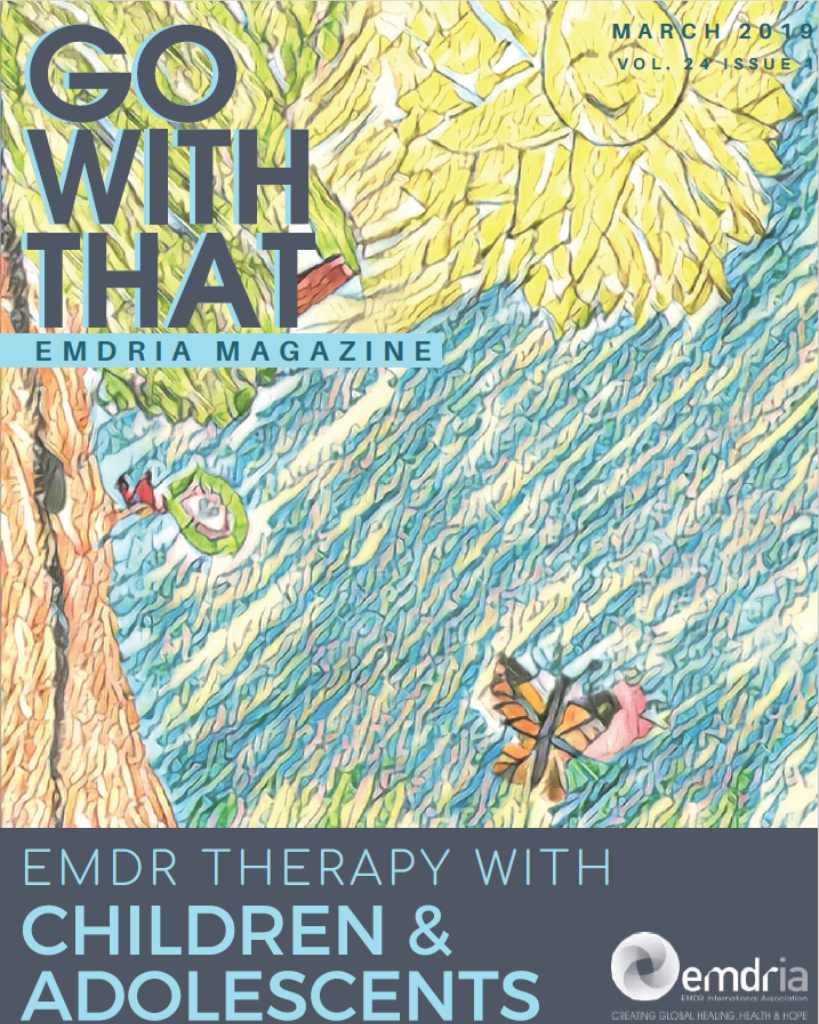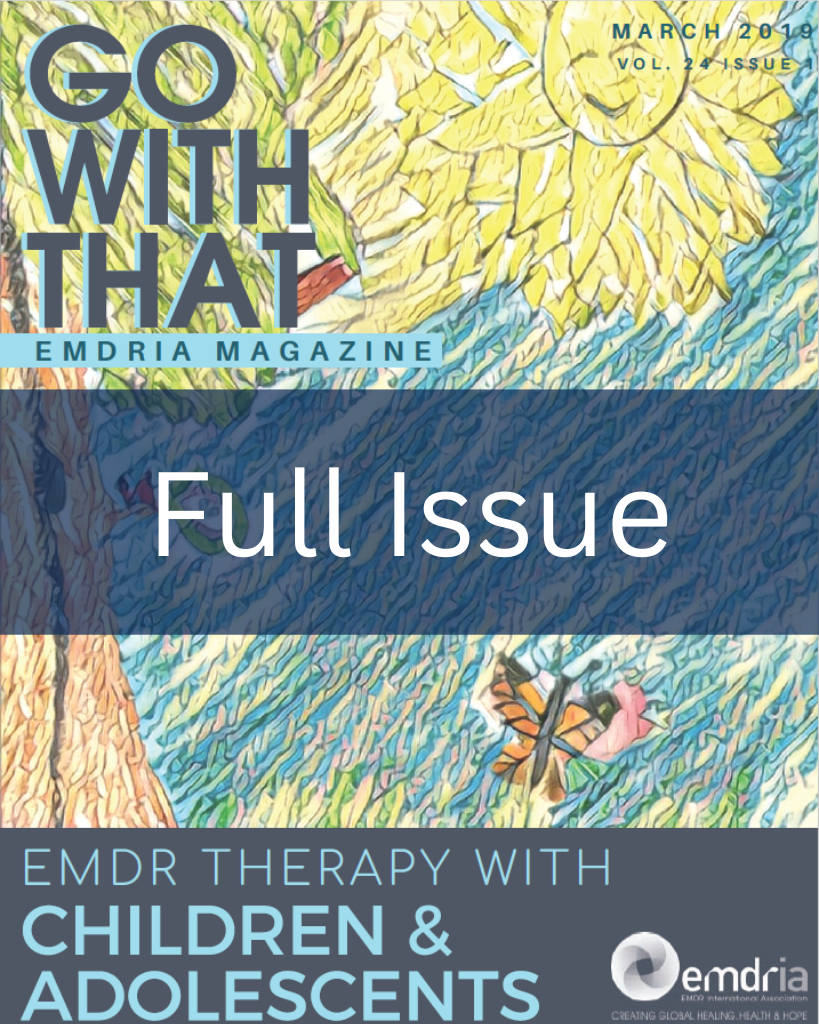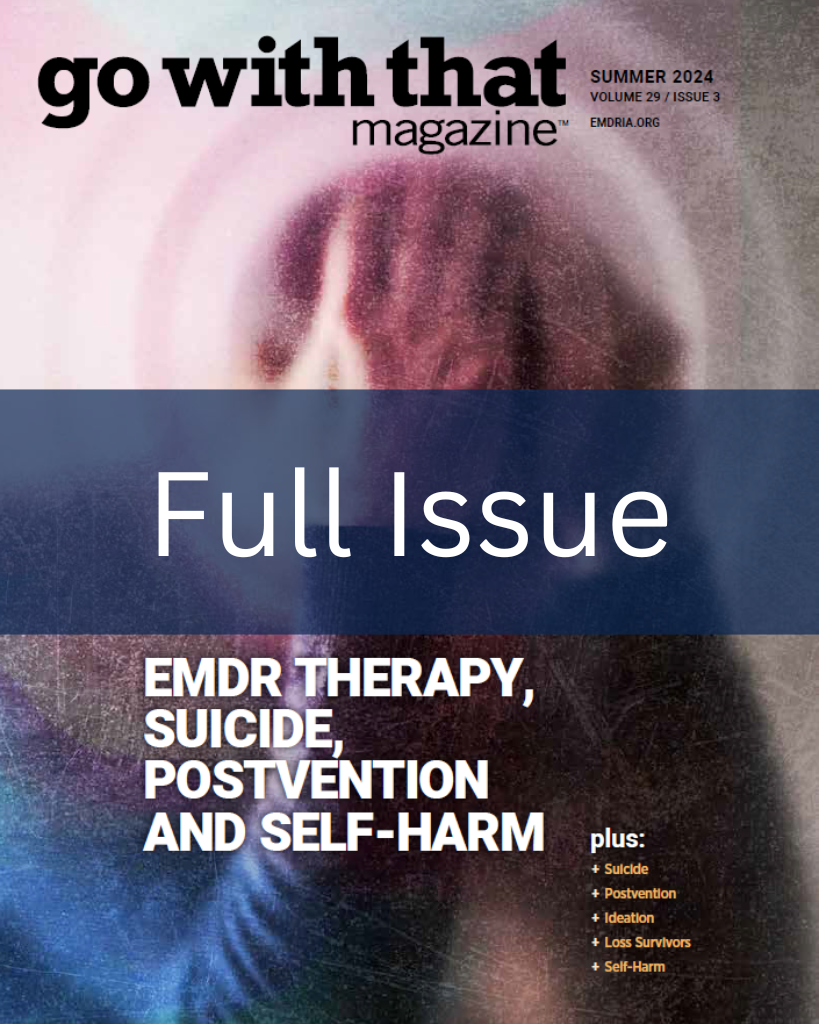The World of Stories and Symbols: The EMDR-Sandtray Protocol
Children are innately drawn to play. Fred Rogers, 1968-2001 PBS television host of “Mister Rogers’ Neighborhood,” was a vocal advocate of play: “Play allows us a safe distance as we work on what’s close to our hearts” (Rogers, 1994, p. 59). Children impacted by developmental trauma may have greater difficulties exploring, accessing, and processing memories of adversity and hardship. As a result, incorporating strategies and adjunct approaches that make EMDR therapy appealing, playful, and developmentally sound may be needed in some cases and imperative in others.
Learn more in this article from the March 2019 issue EMDR Therapy with Children & Adolescents of Go With That Magazine by Ana M. Gomez, MC, LPC.
This content is restricted for members only. Please Log In or Join EMDRIA.





